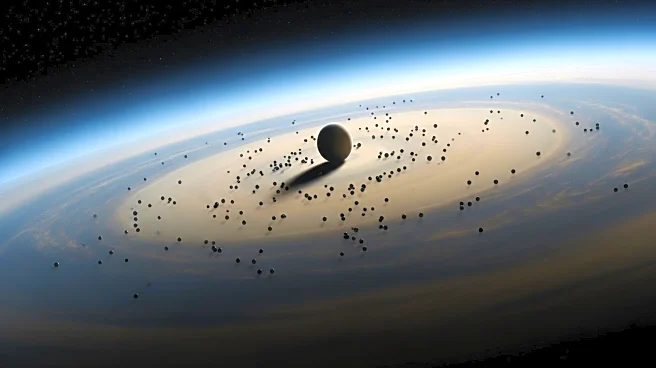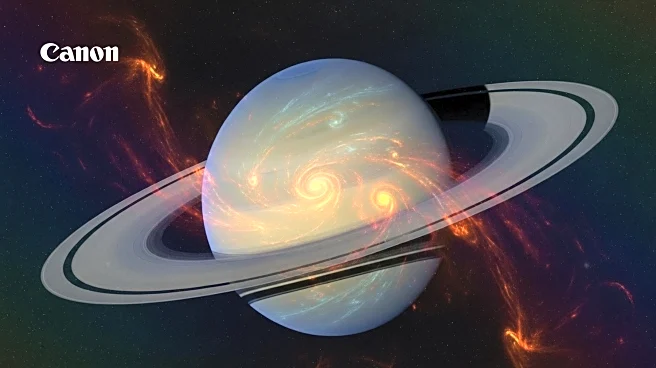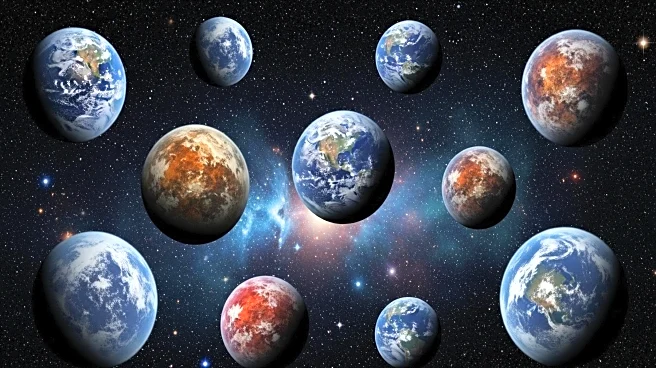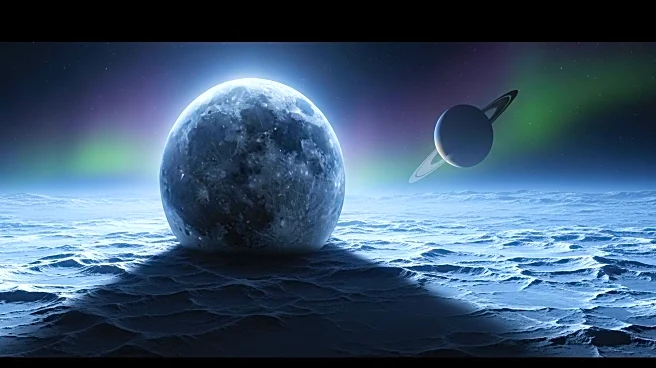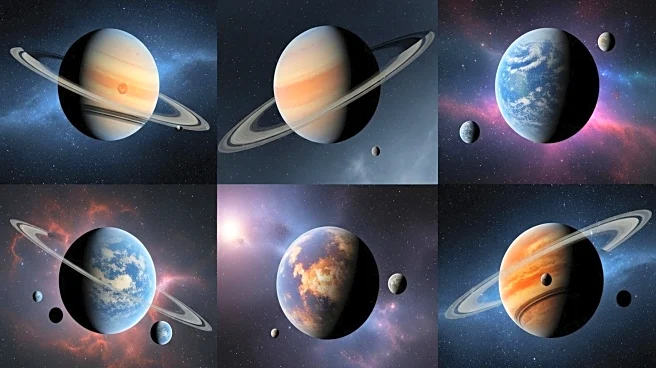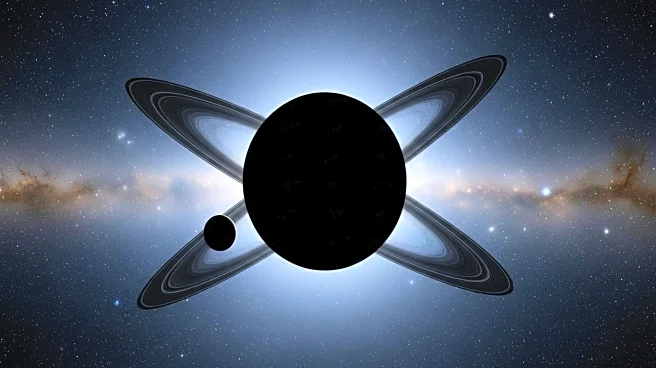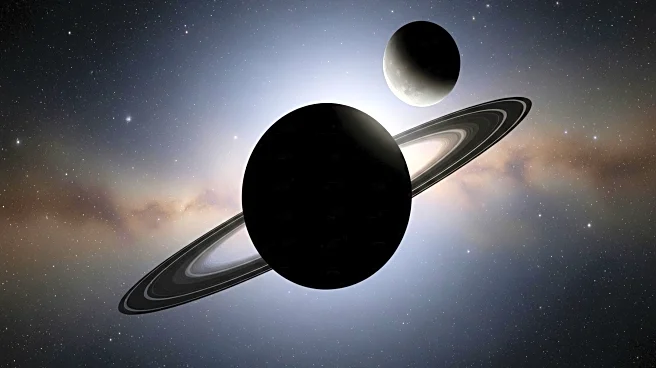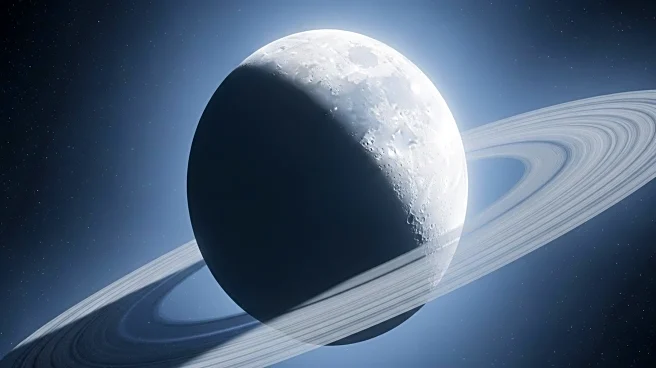What's Happening?
The James Webb Space Telescope has discovered unusual 'dark beads' in Saturn's atmosphere, alongside a four-armed star pattern. These features were detected by the telescope's Near Infrared Spectrograph as it observed the gas giant's atmosphere above the hexagonal storm at Saturn's north pole. The dark beads are drifting in the charged plasma of the ionosphere, while the star pattern is located in the stratosphere. The findings, published in the journal Geophysical Research Letters, are unexpected and currently unexplained, prompting further investigation into their origins and implications.
Why It's Important?
The discovery of these unexplained features in Saturn's atmosphere could provide new insights into the planet's magnetosphere and atmospheric dynamics. Understanding the interactions between Saturn's magnetosphere and its atmosphere may reveal more about the energy exchanges that drive phenomena such as auroras. This research could enhance our knowledge of planetary atmospheres and contribute to broader studies of space weather and cosmic radiation, potentially impacting future space exploration missions and our understanding of similar processes on other planets.
What's Next?
Further analysis and observation of Saturn's atmosphere are likely to follow, as scientists aim to unravel the mystery behind the dark beads and star pattern. The James Webb Space Telescope may continue to focus on Saturn to gather more data, while researchers explore potential connections between these features and the hexagonal storm pattern. Collaborative efforts among astronomers and planetary scientists could lead to new theories and models explaining these phenomena.

